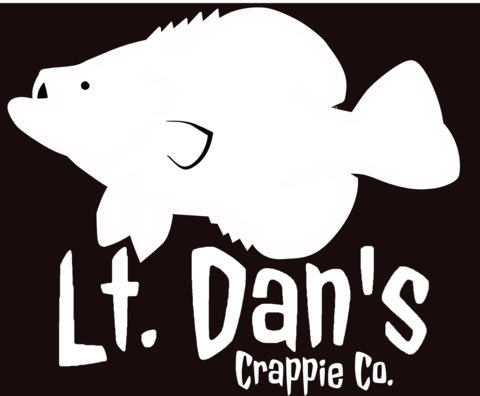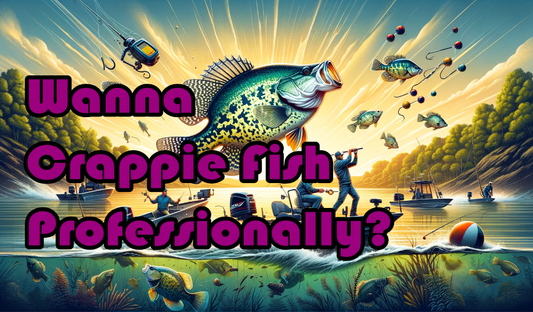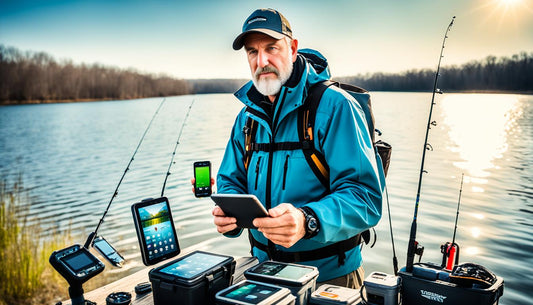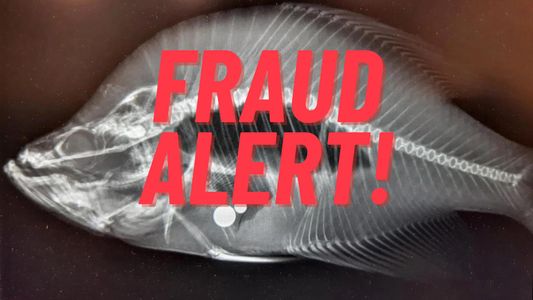Weather Variables Introduction:
We are all very familiar with the behaviors of crappie spawning and the seasonable factors on crappie such as winter fishing and summer fishing.

However, even within these seasons we have one off days or abnormal weather impacts within seasons that can throw off the normal seasonal behavior of crappie. As a crappie fishing enthusiast and crappie guide, we will have those days where we scout and plan for our guided fishing trip to optimize the best experience for our clients, to find ourselves with an unexpected shift in weather resulting in a change in crappie behavior or patterns. In this article we will look at different weather factors and how crappie behave to them. We will also look at strategies to adjust our plans on the fly to find crappie while facing unplanned weather challenges.
How Do Crappie Behave To Different Temperatures?
Water temperature is the holy grail to understanding where to begin your search for crappie fish! These fish will adjust their behavior greatly between feeding, roaming, spawning, accordingly with the water temperature.
80 to 90 Degree Fishing Impact
After the spawn is over the our lakes begin to heat up in the summer, you will find our lakes are not as crowded. This is because many of our friends don’t understand the post spawn pattern of our crappie dinner plates. As that water heats up past 80 degrees, we have to look back into deeper waters. Here you will find flats and structures along the edges of flats in water between 15 to 30 feet deep. The hotter it gets the deeper the fish will retreat from the hotter water above. While the crappie are hanging tight to these mid depth structures try tossing out a crappie lure or jig and drifting it in slowly. This slow drift may trigger a response and it swims past the structure and a school of crappie.
As the water continues to heat up into the mid 80s, start looking for the channels off the flats. Edges of old creek beds or ponds, should start holding more numbers as they continue to seek shelter from the heat as the higher water continues to heat up. Around this temperature you may also begin seeing many more crappie suspended within or hugging the bottom of the channels.
As temperatures begin to hit 90 degrees crappie will be focusing on conserving energy within our lakes. You should be able to find them suspended within the water column of deep channels or hugging the mud, however they will not be as active. Lets face it, here in Texas it gets hot, and just like us, our favorite fishy dinners avoid the direct heat and slow down in extreme heat. In order to trigger a bite from these lethargic crappie try slowing down. We like to pull right up with our live scope and drop our jig vertically right on em. However we won’t jig it, instead we let it sit as still as possible just an inch above its nose. This will either wake up that crappie to run, at which point the chase is on with the newly awoken crappie, or he will turn that nose up and take a soft bite. Pay attention to that bite, it will be light and you may miss it.
60 to 75 Degree Spawning Party

This is our favorite temperature each year, as it triggers the crappie spawn! Our full article about spawning crappie can be found here, but this is when all anglers can fill their freezer full of these Texas Crappie Nuggets! The fish will be coming into shallow water to begin their spawning process. Many crappie will still be in prespawn during this time, so if your lake isn’t seeing the quality fish you expect in the shallows or spawning structure, try pulling back out a bit to some pre-spawn staging timber. As the temperature hits 70 to 75, the party is on. Males are sitting on spawning beds as females are coming in for the spawn. In these temperatures anglers can catch big fat prespawn females anywhere between 3 feet and 15 feet of water as they transition in, spawn, and transition back out, to post spawn structure.
45 to 55 Degree Crappie Migration and Prespawn
As temperatures come above the mid 40s and into the low 50s, crappie will have the urge to migrate and feed for prespawn. They will move to 12 to 25 feet of water around creek beds, drop offs, and isolated structures. Look around creek, tributary openings. These crappie will be ready to feed, and you may find some monsters roaming channel beds or edges. The crappie will be fattening themselves up and triggering a response from them will be as simple as dropping a jig or live minnow within their vicinity. Of course if you’re fishing muddy waters, be sure to use a high contrasting jig or lure.
40 Degrees And Below Crappie Fishing
Crappie are going to be deep and sluggish, but they are still catchable! Many anglers don’t understand that while winter fishing can pose a new challenge, it is still some adrenaline pumping excitement. There is something special to finding a roaming crappie in 25 to 60 feet of water suspended or down deep, that you’re able to entice a bite and add them to your cooler for the day. It takes a lot of work and finesse, not to mention boat control to chase these crappie in that depth. Often bringing the challenges of rough waters while trying to remain as still as possible with the jig. So when temperatures have dropped below 40 degrees, look to the open lake and the deep water columns for those big ol slabs, that are conserving energy and acting real sleepy. For 40 degree temperatures prespawn, look at 20 to 30 feet deep off points with drop offs for staging before prespawn.

Will Rain Shut Off Crappie Fishing?
If you’re a North Texas crappie fishing enthusiast like I am, i’m sure you have heard of the bite a stormfront can bring into our lakes. The crappie are famous for turning on to a feeding frenzy before a front comes in, just to turn off in the frog or following a storm. These are tough days for any angler, however we have had some success with pivoting to muddier waters that some of these storms may bring in through creeks and rain runoff. While the reasoning behind his is up for debate, I believe its due to the muddier water being able to warm up just a tad more than the rest of the lake. In these waters I have noticed increased success pivoting to an orange and/or chartreuse jigs following a storm front.
Sunny Day Crappie Chasing
On an unexpected sunny day, you may find the crappie are not stacked up on the structures you’ve been fishing. Sunny day’s are normally also accompanied by slightly warmer temperatures, which often push crappie slightly more shallow. However don’t go too far, just check waters 4 to 8 feet more shallow than you’ve been finding fish. Often, i’ve seen friends overcorrect from fishing 15 to 20 feet the day before, to 8 to 8 feet the next, while looking for the crappie after they move.

However they only needed to adjust slightly more shallow to find them at 10 to 12 feet. Keep that live scope out, cover water, and find that pattern to identify the depth and structure.
Overcast For A Crappie Feast
Overcast days seem to bring out the best crappie fishing. Some believe the crappie feel more secure or the reduced temperatures naturally turn on their feeding and activity. I also believe they offer crappie increased opportunity to ambush prey from closer distances due to the reduced lighting. Instead of having light beaming down and highlighting potential predators below, baitfish have reduced vision below them under overcast conditions. The crappie know this and will venture out further from their brush piles and structure for those significant strikes that we all love!



